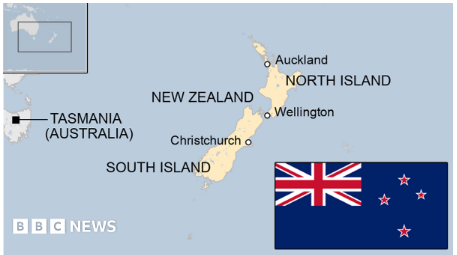India–New Zealand Free Trade Agreement (FTA) Negotiations

- 17 Mar 2025
In News:
India and New Zealand have officially resumed negotiations for a Comprehensive Economic Cooperation Agreement (CECA) after a prolonged hiatus since 2015. This strategic move aims to enhance bilateral trade, deepen economic interdependence, and strengthen regional cooperation in the Indo-Pacific.
Background and Significance
The FTA talks, first initiated in 2010, were stalled due to differences, particularly over India’s high tariffs on New Zealand’s dairy and agricultural exports. The revival of discussions during New Zealand Prime Minister Christopher Luxon's official visit to India in 2025 signals a renewed commitment towards building a balanced, ambitious, and mutually beneficial trade framework.
The bilateral trade relationship, though modest, has shown robust growth. In 2023–24, India exported goods worth $538 million to New Zealand and imported $335 million, generating a trade surplus of $203 million. By December 2024, exports rose by 21.49%, and imports surged by 78.72%, narrowing the trade surplus to $33 million.
Key Objectives of the India–New Zealand FTA
- Enhance supply chain integration.
- Improve market access for goods, services, and investments.
- Strengthen economic resilience and bilateral commercial ties.
- Facilitate trade through the Authorized Economic Operators Mutual Recognition Arrangement (AEO-MRA).
India’s major exports to New Zealand include pharmaceuticals, machinery, textiles, and precious stones, while imports largely consist of wool, aluminum, fruits, and steel products.
Strategic and Geopolitical Dimensions
Beyond economics, the agreement holds strategic significance:
- A defense cooperation MoU was signed to institutionalize military engagements and promote maritime collaboration.
- New Zealand expressed intent to join India’s Indo-Pacific Oceans Initiative (IPOI).
- Both nations pledged support for a free, open, inclusive Indo-Pacific, aligning with the UNCLOS-based rules-based international order.
- New Zealand reiterated support for India’s permanent membership in the reformed UNSC and entry into the Nuclear Suppliers Group (NSG).
Sectoral Cooperation and Emerging Areas
- Climate Change and Sustainability:
- New Zealand joined India-led initiatives like the International Solar Alliance (ISA) and Coalition for Disaster Resilient Infrastructure (CDRI).
- Both countries committed to joint action under the Paris Agreement and Sendai Framework.
- Education and Skill Development:
- A renewed Education Cooperation Arrangement was signed to boost academic partnerships, student mobility, and vocational training.
- Plans are underway to commemorate 100 years of sports relations in 2026, coupled with a new MoU on sports cooperation.
- Diaspora and People-to-People Ties:
- The Indian diaspora forms 6% of New Zealand’s population, playing a pivotal role in cultural and economic relations.
- India raised concerns regarding pro-Khalistan activities, and New Zealand assured cooperation in addressing such issues.
Opportunities and Complementarities
India’s Strategic Importance to New Zealand:
- Large market with a growing middle class and rising demand for dairy, meat, and high-value agricultural exports.
- Largest source of skilled migrants and second-largest source of international students.
- Booming digital economy offers collaboration potential in fintech, AI, and digital services.
New Zealand’s Relevance to India:
- Expertise in sustainable farming and dairy technology supports India’s agricultural reforms.
- Recognized climate tech sector aligns with India’s clean energy transition.
- Potential buyer of India’s defense equipment and surveillance systems, enhancing maritime security amid Indo-Pacific tensions.
Challenges in Bilateral Relations
- Stalled FTA negotiations due to tariff sensitivities, particularly in the dairy sector.
- Non-tariff barriers (NTBs) affecting Indian exports like fruits and vegetables.
- Low trade volumes and limited awareness of New Zealand’s economic strengths among Indian businesses.
- Divergences in geopolitical alignments, with New Zealand’s reliance on China creating potential strategic friction.
Way Forward
- Conclude FTA negotiations through dialogue and sectoral agreements in pharmaceuticals, technology, and horticulture.
- Consider an interim Early Harvest Agreement, akin to India–Australia ECTA, to fast-track gains.
- Enhance market access by reducing NTBs, fast-tracking Mutual Recognition Arrangements (MRAs), and organizing trade expos and B2B interactions.
- Leverage climate and renewable energy cooperation, strengthen defense collaboration, and institutionalize maritime security mechanisms.
Conclusion
The renewed India–New Zealand FTA negotiations mark a pivotal step in recalibrating bilateral economic and strategic relations. Anchored in democratic values and shared Indo-Pacific interests, the partnership is poised to evolve into a multi-dimensional engagement encompassing trade, technology, climate resilience, and defense cooperation. The agreement, if concluded, could serve as a model for equitable North–South economic partnerships in a multipolar world order.
